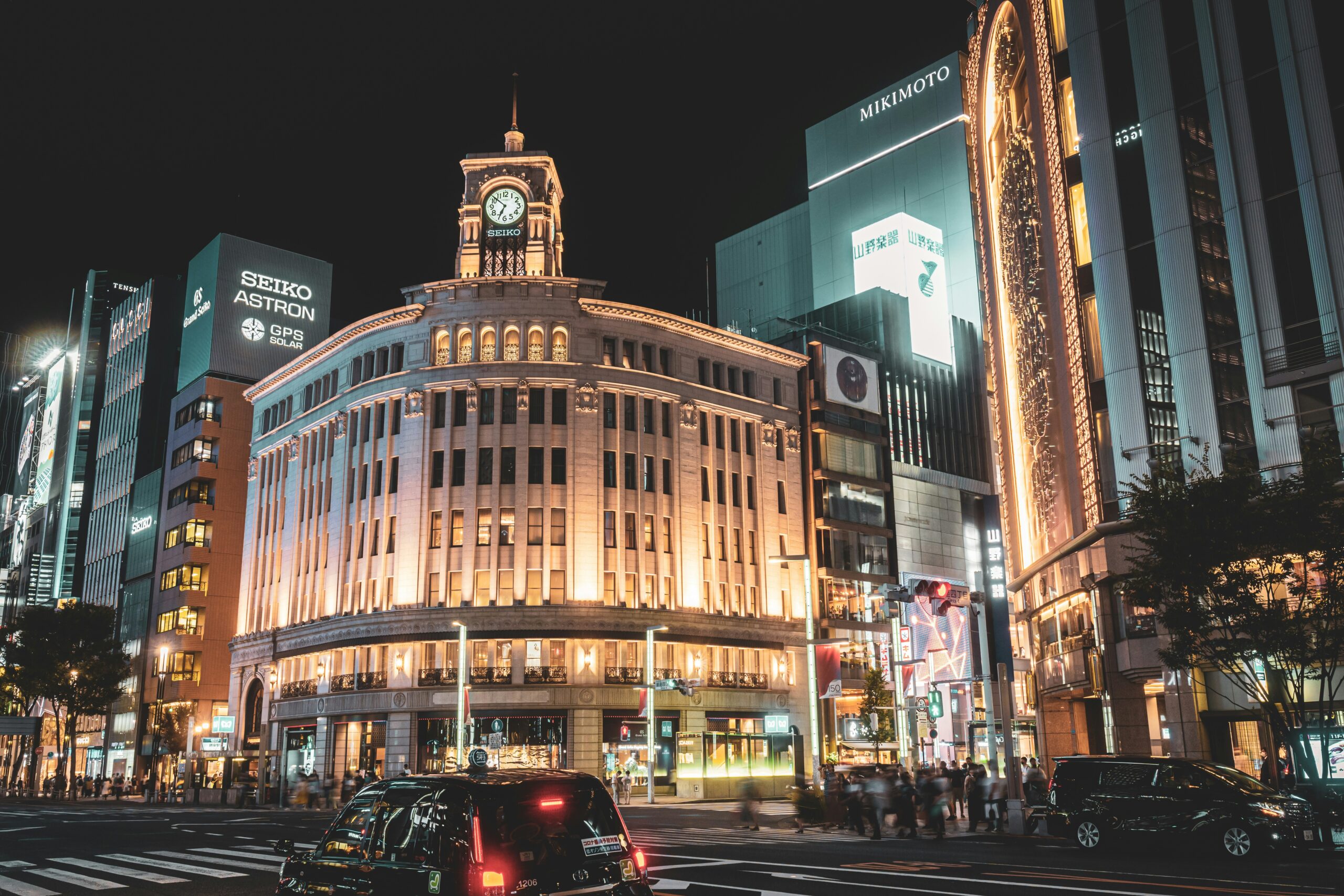Mark hadn’t planned to visit Ginza. It was a recommendation—almost an afterthought—offered by a colleague over coffee one humid morning. “You might like it,” she had said, “if you’re into places where the past and present overlap.” That phrase lingered. He wasn’t sure what it meant, but something about it tugged at his curiosity.
It was the height of summer. The Tokyo air was thick, humming with cicadas and the scent of asphalt warmed by the sun. Mark had taken a short break from his work in Osaka, longing for a change of scenery but unsure of what he was seeking.
He stepped out of the subway into a district both precise and poised. Ginza’s wide boulevards stretched before him, flanked by buildings that gleamed like well-kept heirlooms. He hadn’t expected such balance—between stone and glass, tradition and innovation. It was not the chaos of a metropolis, nor the nostalgia of a preserved quarter. It was something in between.
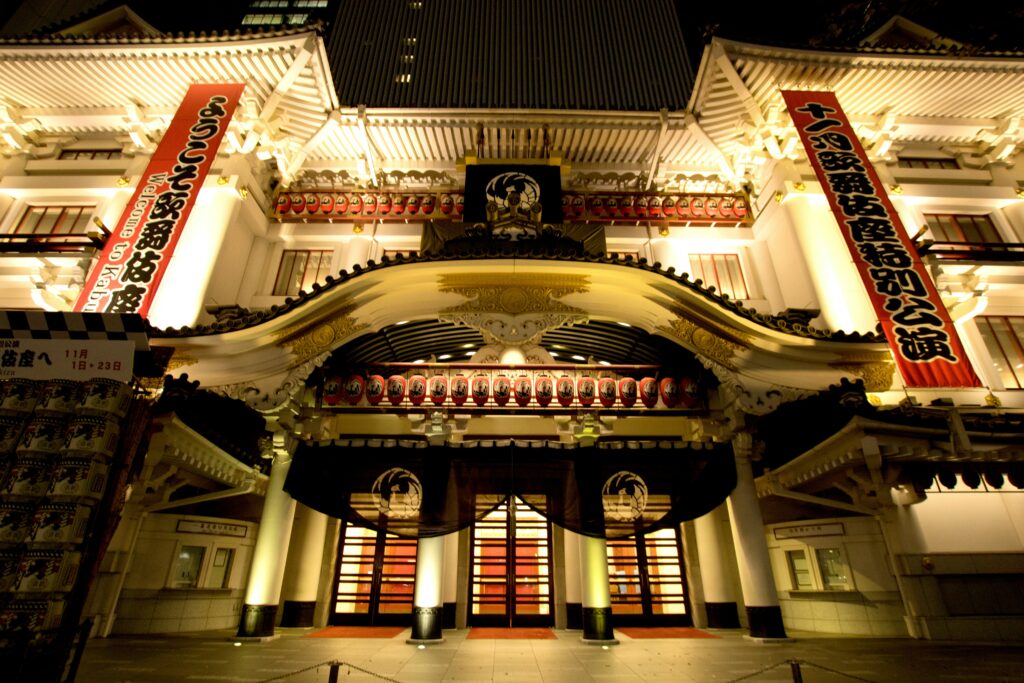
His first stop was the Kabuki-za Theater. Its grand white façade, adorned with curved rooftops and bold red lanterns, stood like a guardian of memory amidst the sleek office towers. Mark had never seen a kabuki performance, but he lingered by the entrance, reading about its centuries-old art form. The mix of stylized drama, elaborate costumes, and musical narration fascinated him. He didn’t go inside. Not yet. But the thought of an art sustained across generations gave him pause.
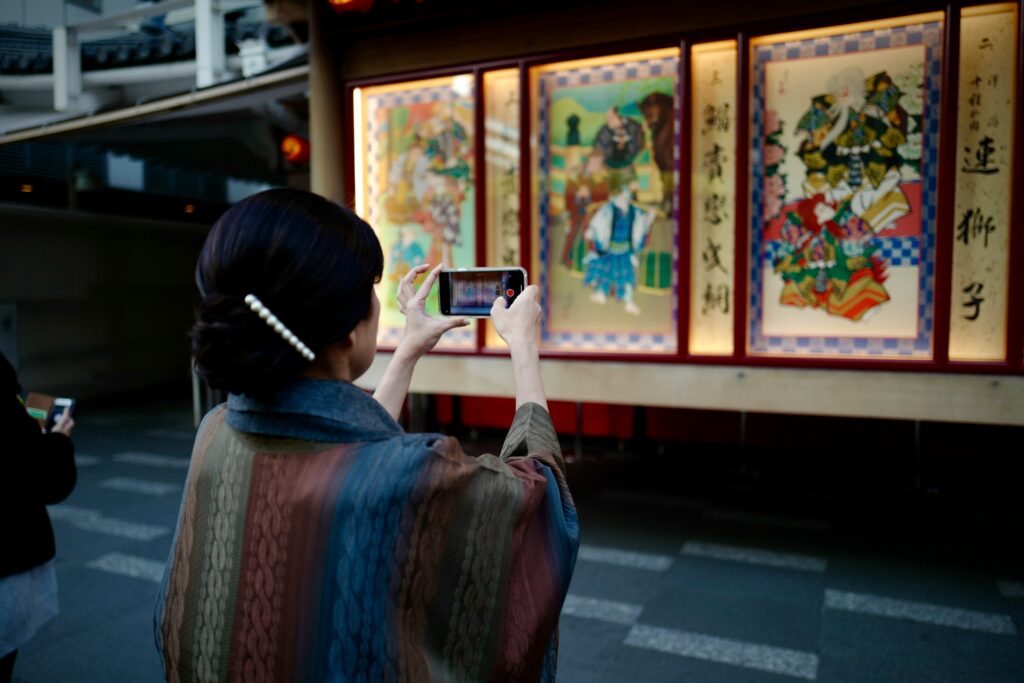
Next, he wandered toward Ginza’s main intersection, where the stately Wako Building stood watch with its iconic clock tower. Built in the 1930s, it retained a solemn grace that contrasted gently with the surrounding modern storefronts. Time seemed to flow differently here. As he waited at the crossing, Mark noticed how people moved—not rushed, but deliberate, as if attuned to something older, quieter.
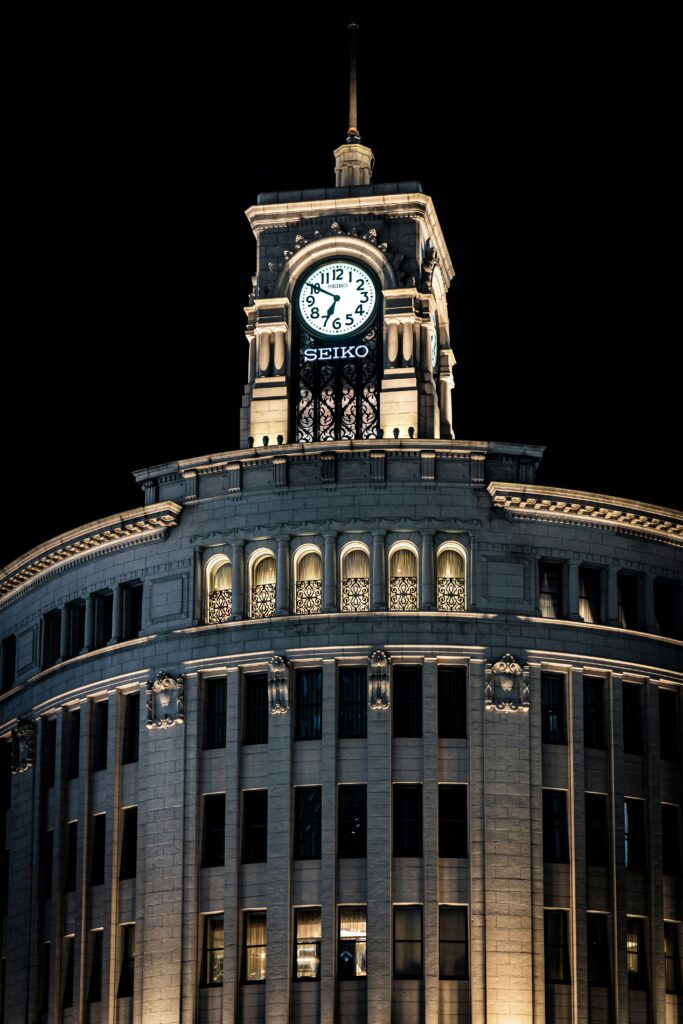
He turned down a side street and was soon drawn to a traditional department store, one of the oldest in Tokyo. Unlike the glassy luxury boutiques nearby, this building seemed to wear its history with pride. Inside, the wood-paneled halls were cool and serene. A woman in a crisp navy uniform bowed as he entered, and he returned the gesture instinctively, moved by the understated hospitality. On the top floor, he browsed through a curated gallery of Japanese crafts—lacquerware, hand-dyed textiles, finely carved fans. They weren’t souvenirs; they were legacies.
Later, heat rising from the pavement, he slipped into a narrow alley and discovered a soba shop tucked between two newer buildings. The exterior was modest—wooden slats, a cloth curtain swaying with the breeze—but inside, it felt like stepping into another time. No background music, no digital menus. Just the clink of ceramic bowls and the soft hum of conversation. He ordered cold soba with tempura—light, crisp shrimp and vegetables fried to golden perfection. The soba was handmade, firm yet tender, with a dipping sauce that whispered umami. It was the kind of meal that demanded silence, not for formality, but out of respect.
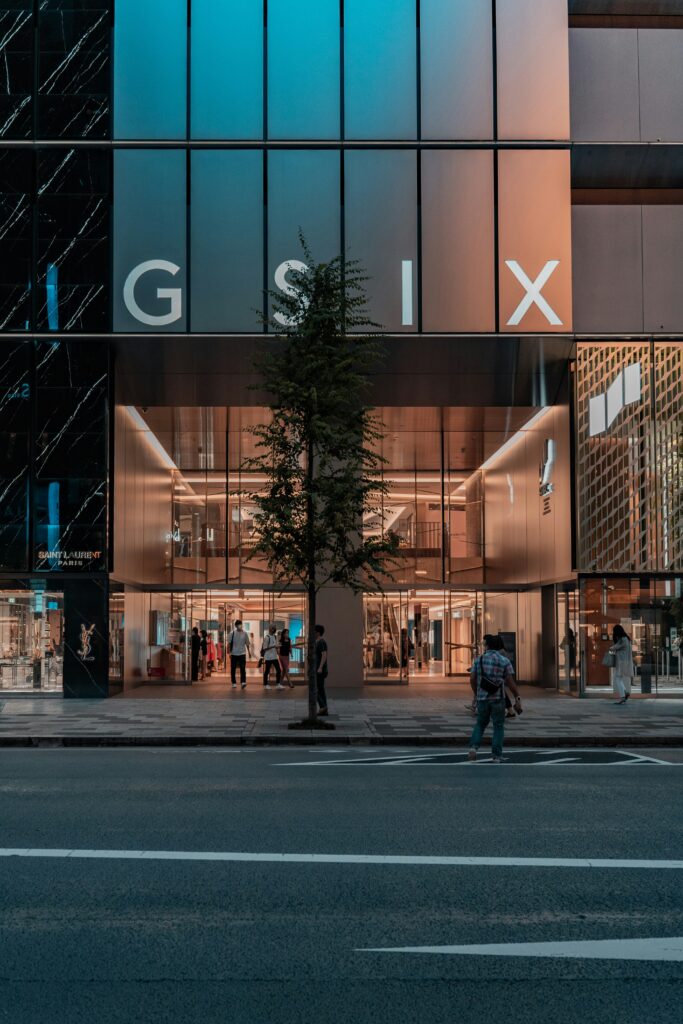
In the afternoon, he ducked into a quiet tea salon known for its traditional sweets. The room was simple—tatami flooring, paper screens filtering soft light. He chose a bowl of matcha and a piece of yokan, a translucent red bean jelly delicately shaped like a summer camellia. A woman around his age served him. Her hair was neatly tied back, her white blouse pressed. When she noticed him studying the sweets, she smiled and said in clear English, “This one is made the way my grandmother taught me. Very old-fashioned.”
They spoke for a while. She told him she had studied abroad but returned to Ginza because it felt “just right”—a place where she could be modern without leaving tradition behind. Her gestures were calm, her eyes steady. She spoke of Ginza not with pride, but with affection, like someone describing an old friend. “Some cities ask you to hurry,” she said. “This one reminds you to notice.”
As dusk fell, Mark returned to the Ginza Six rooftop garden. From there, the city stretched before him—steel and glass kissed by twilight. He sat on a bench, feeling the warm stone beneath him. He watched as the lights flickered on below, not all at once, but gradually, like breath returning to a sleeping body.
And in that moment, Ginza finally made sense.
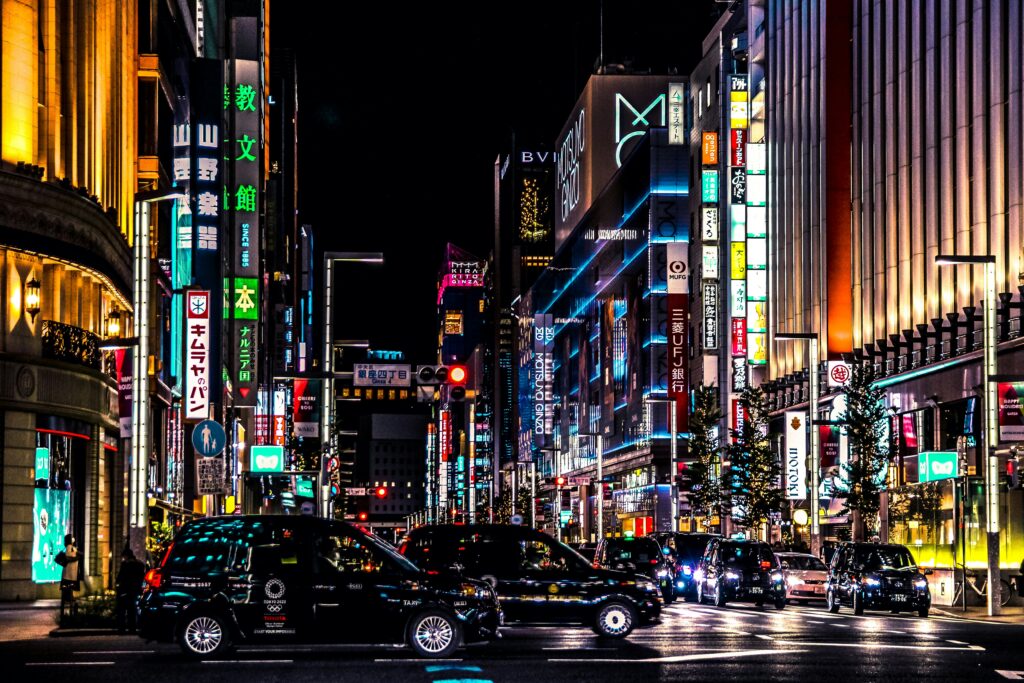
At the end of this journey, Mark realized something quietly profound: Ginza was not just a commercial district or a parade of modern displays. It was a city where over a hundred years of time had settled, layer upon layer, like lacquer.
There was a will to change here—but also a deep, deliberate choice to preserve. That intention was woven into the very corners of the streets.
In its newness, the old remained. And none of it demanded explanation or applause. It simply endured—silently, beautifully.
And for the first time in a long while, Mark understood:
That was the true elegance of a place like Ginza.
Something New Travel

